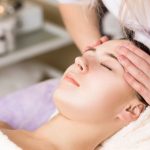How should skin care for babies be? What should be paid attention to when doing skin care for newborn babies? Dermatologist Dr. Dilek Eryilmaz wrote an article for “Anne Bebek Kulübü (Mother Baby Club)” about baby skin care and common baby skin issues!..
How should skin care for babies be?
Do you believe that all babies have a flawless skin? Please kindly, reconsider. We imagine that babies’ skin is very nice, soft and smells great. However, in reality this is sometimes not the case. Babies can also have dryness, sensitivity, exfoliation and even strange coloring, especially in the newborn period.
Dear mothers and mother-to-be’s, in this article you can find the things that you are curious about the care of babies’ sensitive skin and the management of their skin conditions.
- The bathroom event should not be exaggerated
Yes, you may be showering every day, but your baby may not need to be bathed every day. Especially in the autumn-winter months, my husband, who is also a pediatrician, Dr. Ahmet Eryilmaz states that a bath schedule, two or three times a week is quite sufficient for babies. Frequent bathing can dry out the skin and cause the structures that make up the natural protective layer of the skin to move away from the skin, while keeping our baby clean. However, of course, the diaper area should be cleaned as often as necessary.
- Our best friend is moisturizing creams
Your baby’s skin is prone to dryness, so you should moisturize as much as possible. When you take your baby out of the bath, you should apply moisturizing cream to his skin as soon as possible after gently drying it. You should also use a moisturizer multiple times between each bathing session. While moisturizers provide moisture support to the skin, they also prevent the evaporation and loss of moisture already in the skin. In addition, in cases where the air in your baby’s room is very dry, you can also use a humidifier to prevent the skin from drying out.
- Let’s choose products suitable for sensitive skin
Until the babies are one year old, it is the best approach to use soaps and shampoos specially developed for this age group. In general, these products do not contain toxic substances, dyes, deodorants, alcohol and any other chemical agents that can harm your baby’s skin. When you bath your baby, you should know that some baby soaps will not foam as much as the soaps you use yourself. Less foaming does not mean you need to use more product and, the amount of foam has almost no effect on the cleaning ability of the product.
- Forget about baby powders
We prefer to avoid baby powders because of the possibility that your baby might breathe into their lungs. To protect from diaper rash; you should clean your baby’s diaper area with warm water and cotton and then, dry it well. In addition, in this day and age, there are other options such as creams that are very compatible with baby skin to prevent diaper rash.
- Let’s be moderate when exposuring the baby to the sun
Sunscreen creams are not recommended for babies younger than 6 months. More precisely, the use of sunscreens in babies younger than six months has not been approved, as there are no studies yet in infants of this age. For this reason, babies in this age group should be protected from direct exposure to sunlight. In sunny weather, babies should be kept in the shade of trees and/or umbrellas. We also recommend using a hat and/or the stroller sun shade, if available.
After your baby is six months old, sunscreens with physical protective content (such as zinc oxide) should be preferred because these types of products will not irritate your baby’s skin and eyes.
- Let’s clean the skin folds
While trying to moisturize with creams, you should make sure that your baby’s skin does not stay wet. Moisture may remain in all skin folds, which are prone to rashes and are likely to be irritated, and may subsequently lead to redness and peeling. Therefore, skin folds should be cleaned with warm water, dried well and moisturized with creams. If the rash has become swollen and inflamed, this may indicate a fungal infection, in which case you should consult a dermatologist and/or a pediatrician. In addition, since food residues left around the mouth after feeding can cause irritation, you should wipe your baby’s mouth area after every feeding.
- Redness and diaper rash problem in the diaper area
I have never met a baby who has never had a rash in the diaper area, unfortunately, you will also encounter this situation, frequently. Rashes in the diaper area usually do not pose a serious problem and regress with some precautions. In order to keep the diaper area dry, it is necessary to change the diapers frequently, to ventilate this area, to clean this area with warm water and cotton, and to use diaper cream or moisturizing creams after each diaper change. The only key point here is to know the difference between a rash in the diaper area and a diaper rash with a fungus on it. If it is only redness, the event usually disappears with creams and precautions. However, if the rash is a swollen red rash accompanied by inflamed white scales and lesions, this may indicate a fungal infection, so you should consult a dermatologist and/or a pediatrician.
- Eczema issue
Another common skin problem in babies is atopic eczema. It occurs with environmental triggering factors in infants with genetic predisposition. Especially after the 3rd month of life, it starts as dryness, redness, dandruff, itching on the cheeks and can also be seen in other parts of the body. Most eczema cases can be treated with over-the-counter creams. However, in cases where such creams do not work, it may be necessary to use specific treatments obtained by prescription from a pediatrician and/or a dermatologist. If you suspect your baby has eczema, I suggest you to first have your baby get physically examined by a dermatologist and/or a pediatrician.
- The birthmarks issue
Birthmarks are a fairly common and usually harmless condition. Some birthmarks are present from birth, while others become evident after a few months. These spots can be brown, white, red and blue-violet. In order to understand whether the skin moles have their structure/appearance changed or not, it is necessary to photograph them and follow-up them closely. If birthmarks become rough, raised or start to grow rapidly, I recommend consulting a dermatologist and/or a pediatrician as soon as possible. This way, your doctor will decide whether everything is okay or not.
As a result, after babies are born, their skin tries to get used to the new environmental conditions and we may encounter some problems during this period. With the right approach and precautions, we can easily overcome these skin problems.



